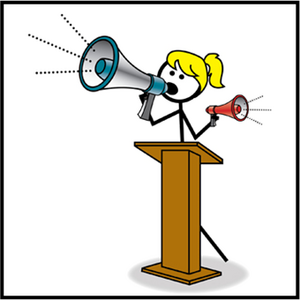All of my years of writing papers in university, did not help me with writing emails. Actually, I think it caused some problems!
My training was for papers, not emails
I was so used to framing my argument, making my case, and providing layers of context. Basically, I was proving that I knew what I was talking about. I had been trained that writing was about convincing my reader, or my professor, that I was an A student.
At work however, I struggled with emails. I condensed, and condensed. But was still hearing that they were too long.
Then I got some (perhaps exasperated?) feedback – “Ann, why are you forcing me to read so much to get to the point of your message?”
I remember being baffled at how else I could get to the point.
Aim for a grand conclusion? or start with a grand opening?
All I could think of was to put “the point” right up front.
Rather than a grand conclusion, could I have a grand opening?
This shift unlocked something for me.
I could be upfront with my reader about why I was even sending an email. Perhaps I needed them to make a decision, or I hoped they could review something, or I simply thought they’d be interested in knowing something.
Gradually, my emails became more productive, shorter, and less time-consuming. I eventually shifted from a mindset of convincing, to one of communicating.
Exercise for your communication muscle
So here’s an exercise to help you strengthen your communication muscle:
All this week, at least once a day, take a moment before starting an email and decide why you’re sending it. Is it for their:
- decision?
- review?
- information?
Then be direct and clear about what you’re asking of the reader, right up front as you start the email.
Once you’ve drafted the email, consider if it was easier or harder to write than usual, and notice if there was anything that came to mind that you then chose not to include.
At the end of the week, notice:
- How your readers reacted to these direct emails
- And any patterns in which kinds of messages were easier/harder for you to write


